Japanese gardens are a traditional form of art by itself. Through Japanese gardens, we can learn about Japan’s interesting and unique history, religion, and understand their core beliefs. Learn how Japanese gardens have transformed through time as you admire beautiful Zen gardens, tea gardens, pond gardens, and more.
Table of Contents
- History of Japanese Gardens
- Traditional Japanese Garden
- Enchanting Kyoto Temples with Gardens
- Summary
History of Japanese Gardens
The history of Japanese Gardens (日本庭園 Nihon Teien) dates back around 1,500 years with records showing the existence of Palace Gardens during the 5th century. As the Japanese started to visit China, whether it be for business, diplomatic, or educational reasons, they became inspired by the Chinese landscapes. Upon their return to Japan, attempts were made to recreate the scenes.
As time passed, a unique Japanese style garden started to develop in the 7th century. This new style garden carried a unique blend of Buddhism and Taoist principles, yet also carried elements of Shintoism. This was unsurprising as history has shown how Buddhism has made a profound impact on Japan’s history and culture, which is equally reflected in the gardens. A prime example of this is the creation of Zen gardens sometime in the Kamakura Period.
If you’re interested, you can read more about the multiple religions in Japan here.
Aside from gardens, tea ceremonies were also introduced to Japan in the early 1100s. At one point, tea ceremonies and gardens had become a “set” as one could not be enjoyed without the other - this explains the many historical teahouses and gardens littered all over Japan. Tea gardens popularity was everlasting, progressing determinedly up till the Edo Period when stroll gardens were introduced.
Until finally as Japan embraced modernization, the appearances of Western-European gardens came to be in the 1900s. Despite the ever-changing styles of Japanese gardens, there is 1 notable characteristic that has not changed - the minimalist simplicity that can only be called beautiful.
※ Encyclopædia Britannica, Inc., "Japanese garden" ※ Garden Visit, "Timeline: Japanese garden design history"
Writer's Pick
Traditional Japanese Garden
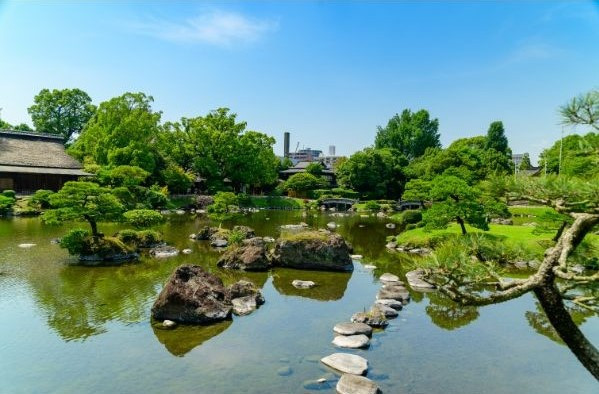
What exactly is a Japanese Garden-style? And how does one go about identifying one?
Features of A Japanese Garden
According to Encyclopaedia Britannica, “Japanese garden, in landscape design, a type of garden whose major design aesthetic is a simple, minimalist natural setting designed to inspire reflection and meditation.”
This is undeniable, but how is this done? By a balance of the following garden features:
-
Water is an important element in the traditional design of Japanese gardens symbolizing calm, renewal, and healing. The circulation of water is salient in most Japanese gardens, for the feelings of tranquility and peace, as well as a symbol of continuity. It is common for Japanese gardens to have a water feature - pond, lake, waterfall, stream, basins, and more.
-
Stones are another important element. They give character and personality to a garden. Their placement is carefully planned to provide balance to the garden or to illustrate philosophies. Great effort is made to procure appropriate stones - their size, shape, and texture. This is especially so if a stone is to be the centrepiece of a garden. One of Japan’s famous types of gardens are rock gardens (more on that below).
-
Plants are the universal representation of life and growth. Just like stones, careful consideration is given to placement. Japanese gardens are predominantly green with flowers (usually only 1 type) to accentuate the garden like lotuses and tsutsuji. Regard is also given towards the curvature of tree branches, shadow, reflection on water, and seasonal changes.
-
Other features may include bridges made from natural materials like wood or stone; stone lanterns for lighting the way; and carps or Japanese Koi.
※ Encyclopaedia Britannica, “Japanese Garden - Characteristic Features” ※ Space for Life, "The elements of the Japanese Garden"
Japanese Garden Designs
There are many ways to categorize Japanese Gardens: by terrain, by design style, by era. We’ve already mentioned the Zen garden, tea garden, and stroll garden in History above. Now, let’s have a detailed look at the three main classifications of Japanese Gardens; Karesansui, Tsukiyama, and Chaniwa.
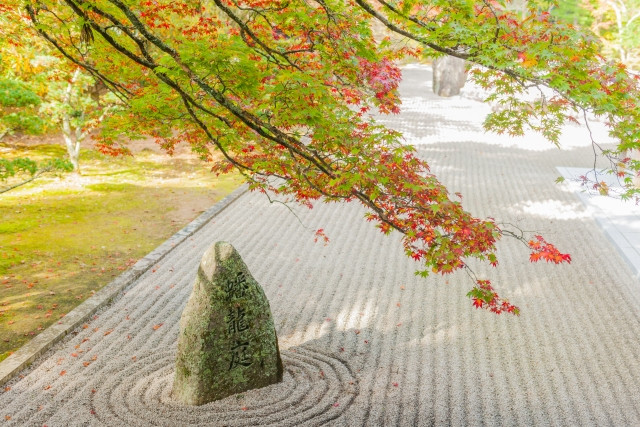
Karesansui
Karesansui (枯山水), also known as Zen Garden, Japanese Rock Garden and dry landscape garden, is one of the most popular forms of Japanese Gardens.
Let us have a look at the Kanji for Karesansui:
枯 Wither
山 Mountain
水 Water
Karesansui literally means “withered mountain and water” which makes the garden's composition of only rock, sand, and gravel pretty self-explanatory. Meticulous arrangement and careful design is given to utilize the limited materials in depicting an image of mountains surrounded by water. This is done by using large stones in various shapes to represent an island or mountains, whilst gravel and sand are raked into a flowing pattern that represents the surrounding sea or river.
Japanese rock gardens are unique to Japan. It encompasses both the ideals of Shinto and Buddhism. From Shinto, there is a belief that deities reside in rocks; whereas from Buddhism, it is believed that the Zen garden is an expression of thought.
Karesansui started in Japan sometime in the Heian Period (794-1185) when Zen Buddhism came to be. These zen gardens were created to be viewed from afar like a veranda or porch. They were often available in temples, made to mirror nature to create a place for meditating. One of the most famous karesansui can be found in Ryoan-Ji, Kyoto.
※ Japanese Gardening Organization, "Chapter 5: The Dry Landscape Garden"
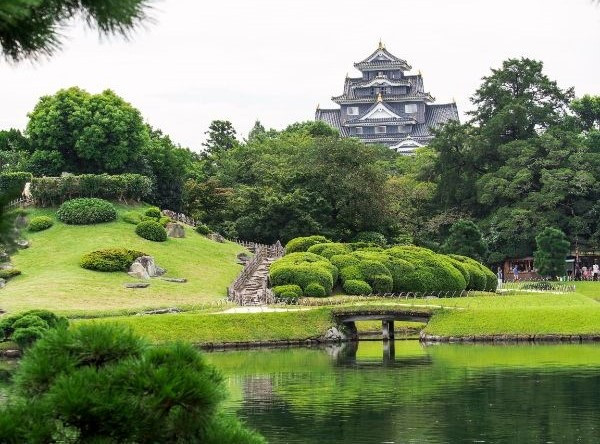
Tsukiyama
Tsukiyama (築山) means “artificial hills”. Tsukiyama gardens, also known as Hill Gardens or Hill and Pond Garden, is one of the oldest Japanese gardens. This type of garden consists of many elements such as hills, ponds, streams, stones, bridges, and flowers to recreate beautiful sceneries from Japan and China.
The most common characteristic of Tsukiyama Gardens are the charming hills and ponds. Cranes and turtles are also a common feature of Tsukiyama Gardens, representing longevity and happiness. If you are interested in visiting a Tsukiyama Garden, try going to Tenryuji Temple and Saihoji Temple in Kyoto.
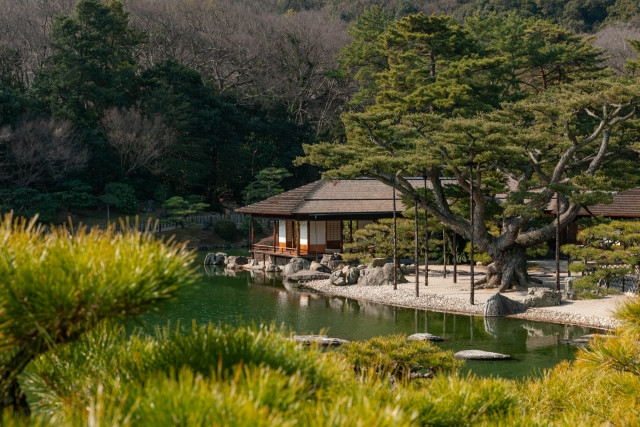
Chaniwa
Chaniwa (茶庭) literally means Tea Garden:
茶 Tea
庭 Garden
Chaniwa is a garden specifically made to be enjoyed whilst holding a tea ceremony. A Cha-shitsu (茶室) or Tea House is built at an optimum spot front and centre of the garden. The garden is designed in such a way that its full beauty and potential can be admired from the Tea House.
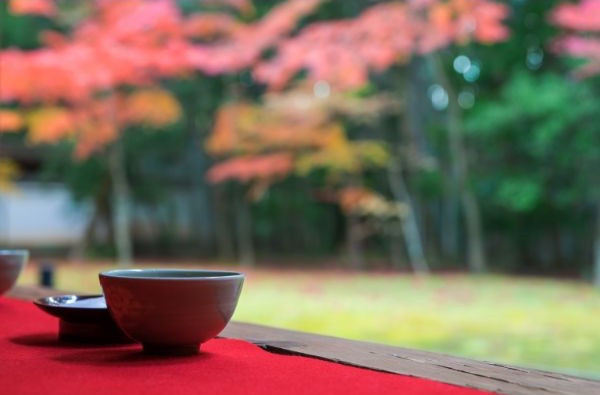
The Japanese Tea Ceremony
Japanese Tea Ceremonies, also known as Sado (茶道) and Cha-no-Yu (茶の湯), is one of the most classic and traditional forms of Japanese culture. It involves the ceremonial preparation and serving of Matcha (抹茶), powdered green tea.
The ceremony is performed in a tea room with traditional Japanese room setting (和室 Washitsu). Formal wear like kimono is worn as a sign of respect, depending on the occasion formal Western suits may be allowed. The art of Sado is deeply complex with the many tea making utensils, strict preparation method, and even drinking etiquette. The tradition first started as early as the Kamakura Period (1192-1333) when a Buddhist monk from China visited Japan. Sometime during the Muromachi Period with Zen Buddhism at its peak, tea gardens were built to be enjoyed with tea ceremonies.
Enchanting Kyoto Temples with Gardens
Considering how deeply entwined Japanese Gardens are with religion, it makes sense that most Japanese Gardens are found within temple grounds. With Kyoto as the heart of Japanese tradition and home to many temples and shrines, it is the perfect area to visit and admire remarkable Japanese Gardens.
Katsura Imperial Villa
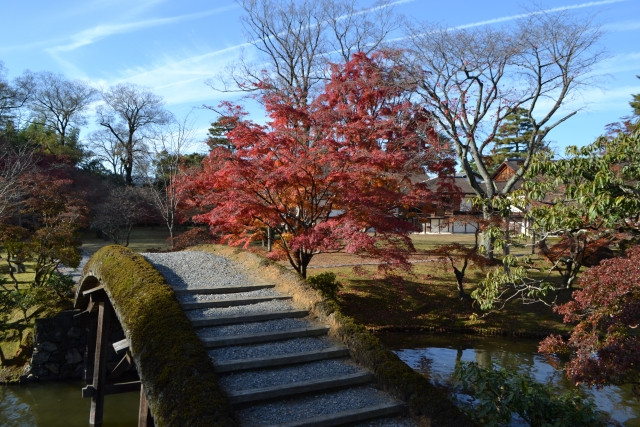
When speaking about Japanese Gardens, there is none more famous than the Katsura Imperial Villa. The villa’s entire area encompasses around 16 acres of land. It was built as a place of residence for the Imperial Family including Prince Toshihito (the emperor’s younger sibling), and Prince Toshidata (Prince Toshihito’s son). Construction by stages of the villa first started in 1615 until its final and present form was completed in 1645.
The garden’s layout consists of a large beautiful pond, and four teahouses, one for each season. To visit the garden and its teahouses, permission to join a tour needs to be obtained by application so make sure to prepare well beforehand so as not to miss out on this masterpiece in the history of Japanese Gardens.
Access:
-
8-mins walk from Katsura Rikyu-mae Bus Station on the Local City Bus No. 33
-
15-mins walk from Katsura Station on the Hankyu Kyoto Line
Tour Fees: 1,000 yen /pax
Read our full article about it here.
※ Encyclopædia Britannica, Inc., "Katsura Imperial Villa"
Ginkaku-ji
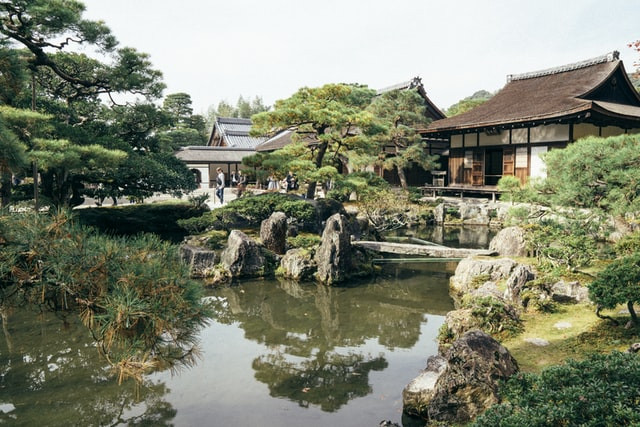
Ginkaku-Ji (銀閣寺) also called the Silver Pavilion, is a Rinzai Zen Buddhist Temple built by Ashikaga Yoshimasa. Not only is the Silver Pavilion a National Treasure of Japan, it is also a designated UNESCO World Heritage; this in itself makes the temple worth visiting. Many tourists overlook it in favor of the more famous and eye-catching Kinkakuji
Aside from its marvelous structures, Ginkaku-Ji is also famous for its gardens. Particularly the Ginsyadan (銀沙灘) or Silver Sand Sea, and its sand cone - Kogetsudai (向月台) or Moon Viewing Platform. If it isn’t obvious enough, this garden is a Karesansui. It is said that the sand is meant to reflect the moon, combined with the Kogetsudai, it would give off the appearance as if the moon is laying atop the Kogetsudai in Higashiyama.
Access: 8-mins walk from Ginkakujimichi Bus Station on City Bus 5, 17, 32, 100, 102, 203, 204, MN204
Entrance Fee: 500 yen (Adult)
※ Rinzai Sect Sokokuji School, "Ginkaku-ji" ※ World History Encyclopedia, “Ginkakuji”
Saiho-Ji
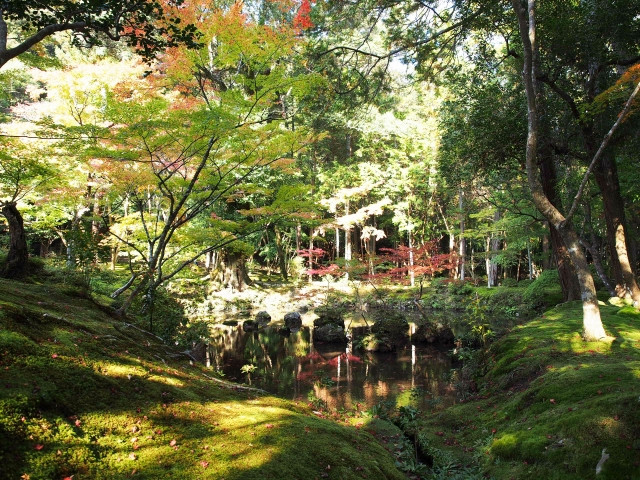
Saiho-Ji (西芳寺), also known as Koke-dera or Moss Temple (thanks to the abundance of moss), is also a Rinzai Zen temple. It is said that during the Asuka Period, the temple was originally a villa owned by Prince Shotoku. It became a temple sometime in the Nara Period upon the Emperor’s request. After its conversion into a Zen temple in 1339, the temple has received many important visitors including Shoguns. The temple’s famous moss garden is a great sight to see, likened to a soft green carpet covering the forest floors. Not only is the moss garden a National Historic Site and Place of Scenic Beauty, it is also a designated UNESCO World Heritage Site.
NOTE
① Visits to the garden are by postal reservation only - Coming Soon: Online Reservations in English.
② Garden is closed during winter for maintenance.
Access: 2-mins walk from Kokedera Suzumushidera Bus Station on City Bus Lines 63, 73
Entrance Fee: 4,000 yen / pax
※ Saihoji, "About SAIHOJI" ※ Saihoji, “Online Reservation (JPN)”
Ryoan-Ji
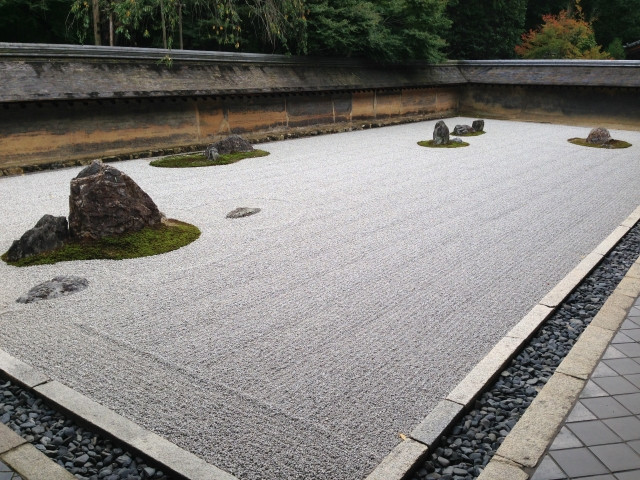
Ryoan-ji (龍安寺), also known as the Temple of Dragon at Peace is a Zen Buddhist temple located in the northern hills of Kyoto, Japan. Ryoan-Ji is the site of Japan’s most famous Zen Garden. It is listed as a UNESCO World Heritage Site along with the rest of the temple complex.
What makes Ryoan-Ji’s stone garden so unique is its many secrets including the almost magical layout of its 15 rocks. The 15 rocks are laid upon mossy surfaces all around the garden. They are arranged in such a way that it is impossible for all 15 to be seen from one point. Aside from that, the garden’s time of creation and design remains unknown to this day. There are many speculations about this including theories that the garden was made in the Muromachi Period and by Soami, neither of which have been proven.
-
7-mins walk from Ryoanji Station on Keifuku Kitano Line
-
7-mins walk from Ritsumeikan Daigaku-mae Bus Station on City Bus Lines 50, 55
-
In front of Ryoanji-mae Bus Station on City Bus Line 59
Entrance Fee: 500 yen (Adult)
※ Ryoanji, “Rock Garden” ※ Encyclopaedia Britannica, “Ryoan Temple”
Summary

Japanese Gardens are an integral part of Japan’s culture. From beautiful temples to serene traditional gardens, each intricate design reflects their rich cultural heritage and religious perspective. Japan offers incomparable experiences that attract people from different parts of the world, and visiting these world renowned gardens and temples will bring you one step closer to understanding this unique culture.






















.png)











